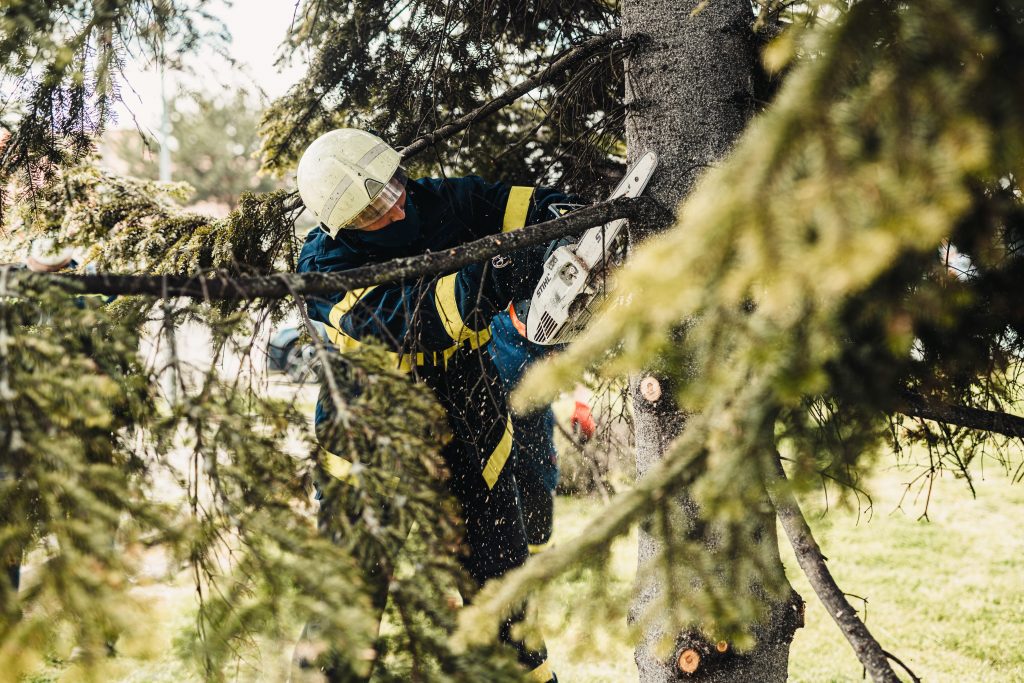Looking to get tree removal help for your nonprofit? You’re not alone. With the increasing need for environmental conservation, many nonprofits are facing the challenge of removing unwanted trees safely and efficiently. In fact, studies show that over 70% of nonprofits struggle to find the right resources for tree removal. But fear not, we’re here to help. In this article, we’ll guide you through the process of obtaining tree removal assistance for your nonprofit, providing you with the knowledge and tools you need to succeed.

If your nonprofit organization is in need of tree removal assistance, there are several options available to you. Tree removal can be a costly and potentially dangerous task, so it is important to consider both the financial aspect and the safety precautions involved. Here are some key points to keep in mind:
You can learn about the history of how nonprofits have received assistance with removing trees. In the past, nonprofits have faced numerous challenges when it comes to tree removal. However, with the rise of community outreach and the availability of tree removal grants, nonprofits have been able to tackle this issue more effectively.

In the early days, nonprofits often struggled to secure the necessary funds and resources for tree removal. Many communities lacked awareness of the importance of tree removal and the potential risks associated with neglected trees. As a result, nonprofits had to rely on their own limited resources or seek assistance from volunteers. This often led to delayed or incomplete tree removal projects.
But times have changed. With the introduction of tree removal grants, nonprofits now have access to financial assistance specifically earmarked for tree removal initiatives. These grants are typically funded by government agencies, private foundations, or corporate sponsors who recognize the value of maintaining a healthy urban forest.
Additionally, community outreach programs have played a crucial role in raising awareness about the importance of tree removal and the services provided by nonprofits. By organizing educational workshops, distributing informational materials, and engaging with local residents, nonprofits have been able to garner support and mobilize community efforts.
Transitioning into the next section about ‘tips,’ it is important to note that while grants and community outreach have significantly improved the landscape of tree removal assistance for nonprofits, there are still some key considerations to keep in mind.
When it comes to running a nonprofit organization, there are three key areas that you need to focus on: funding options, volunteer recruitment strategies, and partnerships with local businesses. First, you need to explore different funding options such as grants, donations, and fundraising events to ensure a stable financial base for your nonprofit. Second, it is crucial to develop effective volunteer recruitment strategies to attract dedicated individuals who are passionate about your cause. Lastly, forming partnerships with local businesses can provide valuable resources, expertise, and increased visibility for your nonprofit, leading to greater impact in your community.
There’s a variety of funding options available for nonprofits looking to get tree removal help. One of the most common options is to explore grant opportunities. Many organizations provide grants specifically for environmental projects, including tree removal and conservation efforts. Research and apply for grants that align with your nonprofit’s mission and goals. Another option is to launch crowdfunding campaigns. With the rise of online platforms, it has become easier than ever to raise funds for specific projects. Create a compelling campaign that highlights the importance of tree removal and its impact on the community. Engage your supporters and encourage them to share the campaign with their networks. By utilizing grant opportunities and crowdfunding campaigns, your nonprofit can secure the necessary funding to address tree removal needs. Transitioning into the next section, let’s now explore effective volunteer recruitment strategies.
To effectively recruit volunteers for your nonprofit, consider utilizing social media platforms to spread awareness about your cause and engage potential volunteers. Social media has become a powerful tool for connecting with individuals who are passionate about making a difference in their community. By creating engaging content and sharing impactful stories, you can attract volunteers who resonate with your mission. Encourage your current volunteers to share their experiences on social media to expand your reach and inspire others to get involved. Additionally, use targeted advertising to reach specific demographics that align with your organization’s goals. By actively engaging the community through social media, you can build a network of dedicated volunteers who are eager to contribute their time and skills to your cause. Transitioning into partnerships with local businesses, you can further expand your volunteer base and create mutually beneficial relationships.
By collaborating with local businesses, you can create impactful partnerships that benefit both your nonprofit and the community. Community outreach is a crucial aspect of any nonprofit’s mission, and by partnering with local businesses, you can extend your reach and make a greater impact. Through corporate sponsorships, businesses can provide financial support, resources, and expertise that can help your nonprofit achieve its goals. These partnerships can also help businesses enhance their brand image and demonstrate their commitment to social responsibility. By working together, you can leverage each other’s strengths and resources to create a positive change in the community. Now, let’s explore the traits of nonprofit tree removal assistance, which can further enhance the impact of your nonprofit’s efforts.
Nonprofit tree removal assistance typically offers services at no cost to eligible individuals or organizations. These programs are an integral part of nonprofit tree care and community engagement efforts. Nonprofit organizations understand the importance of trees in our environment and the potential dangers they can pose if not properly maintained. They strive to provide assistance to those who may not have the means to address tree removal on their own.

When it comes to nonprofit tree removal assistance, there are certain traits that set them apart. Firstly, these programs are staffed by trained professionals who have the knowledge and expertise to safely remove trees. They follow industry-standard practices to ensure the job is done efficiently and without causing further damage. Secondly, nonprofit tree removal assistance programs prioritize community engagement. They understand the importance of involving the local community in their efforts, whether it’s through volunteer opportunities or educational programs.
Transitioning into the subsequent section about steps for obtaining tree removal assistance for nonprofits, it is important to note that these programs have specific guidelines and requirements. By following these steps, eligible nonprofits can access the help they need to address tree removal issues.
When seeking assistance for tree removal, eligible nonprofits must follow specific steps to access the support they require. Here are the steps you need to take:
To achieve your goals, it’s important to have a clear understanding of what you hope to accomplish through the tree removal assistance program. This will help you develop effective funding strategies and engage with the community more efficiently. By aligning your goals with the program’s objectives, you can ensure that your efforts are focused and impactful.
| Goal | Description |
|---|---|
| Funding strategies | Explore various funding sources such as grants, donations, and partnerships to secure financial support for the tree removal assistance program. Consider reaching out to local businesses, government agencies, and philanthropic organizations for potential collaborations. |
| Community engagement | Involve the community by organizing awareness campaigns, educational workshops, and volunteer opportunities. Encourage residents to participate in tree removal initiatives and foster a sense of ownership and responsibility towards environmental conservation. Engage with local community groups, schools, and neighborhood associations to promote the program’s mission and gain support. |
Successful nonprofit organizations practicing tree removal assistance develop habits that foster long-term sustainability and community support. These organizations understand the importance of effective funding strategies and volunteer management in order to achieve their goals. When it comes to funding, successful nonprofits diversify their sources by applying for grants, seeking corporate sponsorships, and organizing fundraising events. They also establish strong relationships with donors, keeping them informed about the impact of their contributions. Additionally, these organizations prioritize volunteer management by implementing efficient systems for recruitment, training, and recognition. They understand that volunteers are the lifeblood of their operations and invest time and effort in cultivating a positive volunteer experience. This includes providing clear expectations, offering ongoing support and training, and recognizing the valuable contributions of volunteers. By adopting these habits, nonprofits can ensure the long-term sustainability of their tree removal assistance programs while building strong ties within the community. These practices not only attract funding and volunteers but also inspire community members to support and engage in the organization’s mission. Now, let’s delve into a real-life story that exemplifies the impact of these habits.
By fostering strong relationships with donors and implementing efficient volunteer management systems, nonprofits can ensure the long-term sustainability of their tree removal assistance programs and make a positive impact in the community. One real-life example of a nonprofit successfully implementing these strategies is the Green Earth Foundation. Through their strong connections with local businesses and individuals, they have been able to secure substantial funding for their tree removal assistance program. This financial support has allowed them to hire skilled professionals and purchase necessary equipment, ensuring that they can provide reliable and efficient services to those in need.
In addition to their donor relationships, the Green Earth Foundation has also implemented a streamlined volunteer management system. They have created an online platform where volunteers can sign up for shifts, track their hours, and communicate with the organization. This system has not only made it easier for volunteers to get involved, but it has also allowed the foundation to better track their volunteer capacity and allocate resources accordingly.
The success of the Green Earth Foundation serves as a testament to the importance of building strong relationships with donors and implementing efficient volunteer management systems. By doing so, nonprofits can ensure the long-term sustainability of their tree removal assistance programs and continue making a positive impact in the community.
Transitioning into the subsequent section about ‘quotes’, it is important to recognize the impact that these successful strategies have had on both the organization and the individuals they serve.
In your quest to obtain tree removal help for your nonprofit aft, one crucial step is to gather quotes from various service providers. Obtaining quotes will not only give you an idea of the cost involved but will also help you compare different options and make an informed decision. When reaching out to tree removal companies, be sure to explain that you are a nonprofit organization seeking assistance. Some companies may offer special rates or discounts for charitable entities.

To begin, research local tree removal companies and compile a list of potential candidates. Contact each company and provide them with the necessary details regarding the scope of the project and any specific requirements. Request a detailed quote that includes a breakdown of costs, such as labor, equipment, and disposal fees.
Keep in mind that funding options for tree removal may vary. Some nonprofits may have access to grants or other funding sources specifically designated for environmental projects. Additionally, consider reaching out to local businesses or community organizations to inquire about potential sponsorship or donation opportunities.
By exploring different quotes and funding options, you can determine the most cost-effective solution for your nonprofit aft’s tree removal needs. With this information in hand, you can move forward in securing the necessary help while staying within your budget.
Now, let’s delve into some secrets that will further assist you in your quest for tree removal help.
Now, let’s uncover some secrets that can greatly assist you in your pursuit of assistance with removing trees for your nonprofit aft. When it comes to tree removal help, there are a few insider tips that can lead you to success. First, reach out to local arborists and tree removal companies and explain your nonprofit aft’s mission. Many of these professionals are passionate about giving back to the community and may be willing to offer their services at a discounted rate or even for free. Don’t be afraid to ask for referrals from other nonprofits who have had success stories in obtaining tree removal help. Networking and building relationships with other organizations can open doors to valuable resources. Additionally, consider applying for grants or funding specifically designated for environmental projects or community beautification. These grants can provide the financial support needed to hire professional tree removal services. By implementing these secrets revealed, you can increase your chances of obtaining the assistance you need to remove trees for your nonprofit aft.
Transitioning into the next section about insights and challenges, it is important to consider the various factors that may arise during the process of obtaining tree removal help.
Transitioning to the next section, it’s important to be aware of the insights and challenges that may arise when seeking assistance with removing trees. Whether you are a nonprofit organization or an individual, there are several factors to consider before embarking on this endeavor. Firstly, gaining insights into the process of tree removal is crucial. Understanding the specific requirements and regulations set forth by local authorities will help you navigate the process smoothly. Additionally, it is important to assess the challenges that may arise during the tree removal process. Factors such as the size and location of the trees, potential risks involved, and the availability of skilled professionals can pose significant challenges.
One of the key challenges faced when seeking tree removal assistance is the lack of community collaboration opportunities. Nonprofits often struggle to find resources and volunteers who are willing to assist with tree removal projects, as it requires specialized knowledge and equipment. This can hinder the progress of such organizations in creating safer and more sustainable environments. However, by fostering partnerships with local businesses, government agencies, and community members, nonprofits can overcome these challenges and create a collaborative approach to tree removal. This not only helps in sharing the burden but also brings together a diverse set of skills and resources.
Transitioning to the subsequent section about the benefits of tree removal assistance for nonprofits, it’s important to understand how these insights and challenges can be addressed to create a positive impact.
Collaborating with local businesses, government agencies, and community members can bring a diverse set of skills and resources to assist nonprofits in addressing the challenges of tree removal. When it comes to tree removal assistance for nonprofits, there are numerous benefits that can have a significant impact. One of the main benefits is overcoming the financial barriers that often hinder nonprofits from undertaking such projects. By partnering with local businesses and government agencies, nonprofits can access funding and resources that would otherwise be out of reach. This assistance allows them to remove hazardous or unwanted trees, improving the safety and aesthetics of their properties.

Finding eligible nonprofit organizations in need of tree removal services is crucial for effective collaboration. Local government agencies and community members can play a key role in identifying nonprofits that require assistance. By leveraging their networks and knowledge of the community, they can connect nonprofits with the resources they need.
Securing tree removal services is another benefit of collaboration. Local businesses and government agencies often have the equipment and expertise necessary for safe and efficient tree removal. By working together, nonprofits can ensure that the job is done professionally, minimizing the risk of accidents or property damage.
In conclusion, the benefits of tree removal assistance for nonprofits are significant. By collaborating with local businesses, government agencies, and community members, nonprofits can overcome financial barriers, find eligible organizations in need, and secure professional tree removal services. These benefits lay the groundwork for successful collaborations and highlight the value of partnership in addressing the challenges of tree removal for nonprofits.
Transitioning into the subsequent section about ‘lessons,’ it is important to reflect on the experiences and insights gained from these collaborations.
In this discussion, you will explore the importance of community collaboration in the process of tree removal. You will also examine the various funding options available for nonprofits seeking assistance with tree removal projects. Finally, you will analyze the potential impact of tree removal on the surrounding environment and the wider community. By understanding these key points, you will gain a comprehensive understanding of the complexities involved in tree removal and its implications for nonprofit organizations.
If your nonprofit needs help with tree removal, you can reach out to local organizations for assistance. Engaging with the community is crucial for effective tree removal. By collaborating with local organizations, you can not only address the immediate need for tree removal but also create a lasting impact on the environment. Community engagement in tree removal projects fosters a sense of ownership and responsibility among residents, leading to a more sustainable and eco-friendly approach. Local organizations often have the resources, expertise, and equipment necessary to carry out tree removals efficiently and safely. They can help assess the environmental impact of tree removal and provide guidance on the best practices to minimize any negative effects. By working together with these organizations, you can make a significant difference in preserving the natural beauty of your area. In addition to community collaboration, there are also various funding options available for nonprofits to support their tree removal efforts.
When exploring funding options for your nonprofit, consider reaching out to local businesses and corporations for potential sponsorship or donation opportunities. These organizations often have a vested interest in supporting community initiatives, and they may be willing to contribute to your cause. Start by researching companies that align with your nonprofit’s mission and values. Craft a compelling proposal that outlines the impact of your work and how their investment can help further your goals. In addition to corporate sponsorships, you can also explore grant opportunities. Many foundations and government agencies offer funding specifically for nonprofit organizations. Research and carefully review the requirements and guidelines for each grant application, ensuring that your nonprofit meets the eligibility criteria. By diversifying your funding sources and strategically pursuing funding opportunities, you can maximize your chances of securing the financial support needed to carry out your mission. This financial support can greatly impact the success and effectiveness of your nonprofit’s tree removal initiatives.
Now that you have explored different funding options for your nonprofit, it’s important to consider the impact of tree removal on the ecosystem and the environmental benefits it can bring. Tree removal, when done responsibly, can have positive effects on the surrounding environment. By removing dead or diseased trees, you can prevent the spread of pests and diseases, ensuring the overall health of the ecosystem. Additionally, removing certain trees can create space for new growth and allow sunlight to reach the forest floor, promoting biodiversity. Furthermore, tree removal can help mitigate the risk of falling trees during severe weather conditions, preventing damage to nearby infrastructure and ensuring public safety. Understanding the impact and environmental benefits of tree removal is crucial for making informed decisions about maintaining and preserving the ecosystem. With this knowledge, let’s now delve into the routines {yt} that can assist you in getting the tree removal help your nonprofit needs.
To establish a strong routine, it’s important to consistently communicate with your team. When it comes to implementing routines and habits for nonprofit tree removal assistance, there are specific action steps that can be taken to ensure success. Firstly, establish a clear plan and schedule for tree removal projects. This will help you stay organized and ensure that tasks are completed in a timely manner. Secondly, create a checklist of necessary equipment and materials needed for each project. This will help you avoid any last-minute scrambling and ensure that you have everything you need to get the job done efficiently. Thirdly, overcome financial barriers by seeking out grants or partnerships with local businesses that are willing to provide funding or materials. This will help alleviate the financial burden of tree removal projects and make them more manageable for your nonprofit. By following these routines and action steps, you can effectively provide tree removal assistance for nonprofits. Now, let’s delve into the pros and cons of this approach.
You should consider the pros and cons of implementing routines and action steps for tree removal assistance in a nonprofit setting. One potential benefit is the cost effectiveness of outsourcing this task. By contracting with a professional tree removal service, you can ensure that the job is done efficiently and safely, without putting additional strain on your nonprofit’s resources. Additionally, outsourcing allows you to tap into the expertise of trained professionals who have the necessary equipment and knowledge to handle tree removal effectively.
However, there are also some potential drawbacks to outsourcing tree removal. One concern is the cost associated with hiring a professional service. Conducting a cost effectiveness analysis can help you determine if outsourcing is a financially viable option for your nonprofit. Another consideration is the potential loss of control over the process. By relying on an external service, you may have less direct oversight and input into how the job is carried out.
In the subsequent section about ‘dos and dont’s {table}’, you will find guidelines on how to approach tree removal assistance in a nonprofit setting. It is important to understand the pros and cons of outsourcing, as well as other factors, to make informed decisions and ensure the best possible outcome for your organization.
One thing to keep in mind when considering tree removal assistance in a nonprofit setting is the importance of following the dos and don’ts guidelines. It is crucial to understand the common challenges and ensure that the process is carried out smoothly. Here are some dos and don’ts to help you navigate through the tree removal process effectively:

| DOs | DON’Ts |
|---|---|
| Obtain necessary permits before removing trees | Neglect to check local regulations and requirements |
| Hire a professional tree removal service | Attempt to remove trees without proper equipment and knowledge |
| Consider the environmental impact of tree removal | Remove trees without considering the ecological consequences |
| Communicate with neighbors and inform them about the process | Ignore the concerns and opinions of neighbors |
| Plan and schedule the tree removal process in advance | Rush into tree removal without proper planning |
When seeking assistance with tree removal in a nonprofit setting, it’s important to be aware of common mistakes that should be avoided. One of the most common mistakes is not considering the overall cost of the project. It’s crucial to have a clear understanding of the budget and to factor in all the expenses associated with tree removal, such as equipment rental, labor costs, and disposal fees. Failing to do so can lead to unexpected financial burdens and hinder the success of your nonprofit organization.
Another mistake to avoid is not properly assessing the expertise and qualifications of the tree removal service provider. It’s essential to choose a reputable company with trained professionals who have the necessary skills and experience to handle the job safely and efficiently. Hiring an inexperienced or unqualified team can result in property damage, personal injuries, and legal liabilities that your nonprofit cannot afford.
Moreover, overlooking the importance of obtaining proper permits and permissions is another common mistake. Depending on your location, tree removal may require specific permits or approvals from local authorities. Failing to comply with these regulations can result in fines and delays in your project.
To summarize, it’s crucial to consider the overall cost, assess the expertise of the service provider, and obtain necessary permits when seeking assistance with tree removal in a nonprofit setting. When dealing with funding challenges in a nonprofit, it becomes even more important to carefully evaluate the cost of tree removal services. Nonprofits often have limited budgets, so it’s essential to find a service provider that offers competitive prices without compromising on quality.
Additionally, volunteer recruitment can be a valuable resource for nonprofits seeking tree removal assistance. By mobilizing volunteers, nonprofits can reduce costs and engage the community in their mission. It’s important to reach out to local organizations, schools, and community groups to find individuals who are willing to lend a hand.
Obtaining necessary permits is another crucial step in the process. Nonprofits must ensure they comply with local regulations and secure the appropriate permits before proceeding with tree removal. This includes understanding any restrictions or requirements related to tree removal in their area.
In the subsequent section, we will explore specific action steps for obtaining tree removal assistance for nonprofits, including tips on how to find reliable service providers and engage volunteers effectively.
In order to provide tree removal assistance for nonprofits, you need to first find eligible nonprofit organizations. This can be done by researching local nonprofits and verifying their eligibility criteria. Once you have identified potential organizations, the next step is to secure tree removal services by contacting local tree removal companies and negotiating discounted rates or pro bono services. Lastly, it is important to address any financial barriers that may arise by seeking funding opportunities, such as grants or donations, to cover the costs of tree removal services.
You can find eligible nonprofit organizations by contacting local government agencies. These agencies often maintain a list of registered nonprofits in your area that are eligible for tree removal assistance. When reaching out, provide them with information about your specific needs, such as the number of trees that need to be removed and any special considerations or requirements. This will help them match you with organizations that have the capacity and expertise to handle your tree removal needs. Once you have identified potential nonprofits, you can further assess their suitability by reviewing their mission statements, previous projects, and testimonials from other clients. This will ensure that you select an organization that aligns with your goals and can provide the necessary services. With this knowledge, you can proceed to secure tree removal services from the chosen nonprofit.
Once you’ve found a suitable nonprofit organization for your tree removal needs, it’s important to reach out and schedule an appointment to discuss the details of the service. Before proceeding, it is crucial to secure permits for tree removal, as regulations may vary depending on your location. The nonprofit organization can guide you through this process, ensuring that all necessary permits are obtained. During the appointment, the organization will evaluate your tree removal needs, taking into consideration factors such as the size, health, and location of the trees. They will also assess any potential risks or obstacles that may affect the removal process. By thoroughly evaluating these aspects, the nonprofit organization can develop an efficient and safe plan for removing the trees. Now, let’s explore how to overcome financial barriers when seeking tree removal help for your nonprofit aft.
To overcome financial barriers, it’s important to explore possible funding options for the tree removal service. Nonprofit organizations often face financial challenges when it comes to tree removal, as they rely on limited resources to carry out their important work. However, there are alternative solutions available to help overcome these challenges. One option is to seek out grants specifically designed for environmental conservation projects. Many foundations and government agencies offer funding opportunities for nonprofit organizations engaged in tree removal and preservation efforts. Additionally, fundraising events and campaigns can be organized to generate funds for tree removal services. By reaching out to the community and highlighting the importance of tree removal for safety and environmental reasons, individuals and businesses may be willing to contribute financially to support the cause. It’s crucial to explore these funding options to ensure that nonprofit organizations can effectively address their tree removal needs and continue their valuable work in the community.
Typically, it takes a certain amount of time to receive tree removal assistance for nonprofits. The average response time varies based on factors such as location, availability of resources, and the specific tree removal process involved.
To be eligible for tree removal assistance, nonprofits must meet specific qualifications and criteria. These requirements ensure that the help goes to those who truly need it. You’ll find the necessary guidelines outlined in the application process.
If you’re unable to receive tree removal assistance, consider alternative funding sources such as grants or fundraising. Additionally, forge community partnerships with local businesses, organizations, or volunteers who may be able to help with the removal process.
There may be limitations on the number of trees that can be removed through nonprofit tree removal assistance. It is important to consider the cost of tree removal assistance and any restrictions that may apply.
When seeking tree removal assistance for nonprofits, it’s important to consider any additional costs or fees. Eligibility criteria may vary, so it’s crucial to inquire about financial obligations before proceeding with the process.
[geocentric_weather id=”45ff4ccd-3d3f-498e-b0b9-91aaaf766bc4″]
[geocentric_about id=”45ff4ccd-3d3f-498e-b0b9-91aaaf766bc4″]
[geocentric_neighborhoods id=”45ff4ccd-3d3f-498e-b0b9-91aaaf766bc4″]
[geocentric_thingstodo id=”45ff4ccd-3d3f-498e-b0b9-91aaaf766bc4″]
[geocentric_busstops id=”45ff4ccd-3d3f-498e-b0b9-91aaaf766bc4″]
[geocentric_mapembed id=”45ff4ccd-3d3f-498e-b0b9-91aaaf766bc4″]
[geocentric_drivingdirections id=”45ff4ccd-3d3f-498e-b0b9-91aaaf766bc4″]
[geocentric_reviews id=”45ff4ccd-3d3f-498e-b0b9-91aaaf766bc4″]